Effect of Xuebijing injection on hematopoietic homeostasis of LPS induced sepsis in mice
Ping Wang,Jun Wang,Ying Hao,Xiao-Rui Li,Ya-Ru Feng,Lan Wang,Hong-Cai Shang,Jian-Xun Wang*
1School of Life Sciences,Beijing University of Chinese Medicine,Beijing,China.
2Dongzhimen Hospital,Beijing University of Chinese Medicine,Beijing,China.
Abstract
Keywords:Xuebijing injection,Sepsis,Bone marrow,Hematopoietic homeostasis
Background
Sepsis is a common condition in intensive care units(ICUs)which associated with a high risk of death[1].It is estimated that there are 19 million cases per year worldwide,and the incidence of sepsis is increasing[2,3].Despite advances in treatment,more than 25-30%of patients with sepsis die from the condition[4].Sepsis initiatesacomplex immuneresponsefollowed by exhaustion of mature hematopoietic cells and an increase in myeloid-derived suppressor cells(MDSCs)which can lead to immunosuppression [5].Recently,acute expansion of hematopoietic stem cells(HSCs)and myelosuppression have been found in sepsis mice[6-8].Meanwhile,the same result was found in septic shock patients and was correlated with unfavorable outcomes[9].Therefore,the impaired HSCs homeostasis during sepsis may contribute to the immunosuppression.
The current treatment for sepsis is indicated in various guidelines,and optimal antibiotic application and supportive therapy are the major treatment regimens[10].As persistentsepsis-induced immunosuppression is associated with deleterious outcomes,immunostimulation seems a reasonable therapeutic option,but none of them have achieved proven effective in clinical until now[5].Whereas Traditional Chinese medicine(TCM)has played a unique advantage in immune regulation.The developing period of sepsis belongs to the syndrome of stasis binding with toxin(瘀毒内阻证)according to TCM pattern diagnosis,and Xuebijing injection(XBJ)was recommended for this syndrome[11,12].
XBJ,evolved from House of Blood-expelling Decoction(血府逐瘀汤),was developed by Prof.Jinda Wang,founder of the Integrated Traditional and Western Medicine in Emergency and Critical Care Medicine in China[13].XBJ is composed of 5 Chinese herbs:Honghua(Carthami Flos),Chishao(Paeoniae Radix Rubra),Chuanxiong(Chuanxiong Rhizoma),Danshen(Salviae Miltiorrhizae Radix Et Rhizoma)and Danggui(Angelica sinensis).It has been proved effective for severe infections in critically ill patients[14].It shows satisfactory anti-inflammatory,balancing coagulation and immunomodulation effects in a series of animal experiments[15-17].
Previous researches involved immunomodulation mechanism of XBJ almost limited to mature hematopoietic cells such as neutrophils or macrophages[15,17].As a formula functioned to promote blood circulation and detoxification(活血化瘀),the target of XBJ maybe on the HSCs.Our study attempt to explore the potential mechanism of XBJ in the treatment of sepsis from the perspective of bone marrow HSCs.
Material and methods
Animals
Male C57BL/6 mice(6-8 weeks old)were purchased from Charles River and housed at SPF laboratory.A total of 32 mice were used in this study.For BM(bone marrow)cells colony-forming unit(CFU)assay,2 mice were sacrificed and the femurs and tibias were removed from each mouse.BM cells were isolated according to standard operation procedures (SOPs).For hematopoietic homeostasis research,sepsis was induced by lipopolysaccharide(LPS)055:B5(Sigma,USA)through peritoneal injection(i.p.)at the doses of 20 mg/kg.A total of 12 animals(6 in control and 6 in LPS group)were sacrificed after i.p.injection.For XBJ experiments,18 mice were randomly divided into control group,LPS group and XBJ group(n=6 for each group).Mice in XBJ group were given Xuebijing injection(Tianjin Chase Sun Pharmaceutical Co.,Tianjin,China)at 20 ml/kg by tail vein every day for 4 consecutive days,after i.p.injection of LPS.Mice in LPS group were given normal saline(NS)as a control for 4 days,after i.p.injection of LPS.Mice in control group were given NS for 4 days after i.p.injection of NS.All animals were sacrificed on the fifth day.Our experiments were approved by the Medical and experimental animal ethics committee of Beijing University of Chinese Medicine.
Preparation of single cell suspension of BM
Mice were sacrificed and the femurs and tibias were removed free of skin and muscle tissues and put into phosphate buffered saline(PBS).Cut the ends of the bones(epiphyses)to expose the interior of the marrow shaft and flush out the marrow by the syringe with 1ml PBS.BM were blown into cell suspension and pipette into a sterile 50 mL tube through a 40 μm cell strainer,followed by centrifugation at 300 g for 5 min.Pour off supernatant and resuspend cells with 3 mL PBS and add 9ml red blood cell lysis buffer(Solarbio,Beijing,China)for 15 min.Centrifugation at 300 g for 5 min.To make a single-cell suspension,washed for 3 times by PBS.Keep the cells in medium on ice until use.
CFU assay
For CFU assay,single-cell suspension were diluted with RPMI 1640+2%fatal bovine serum(FBS)to a concentration of 5 x 105cells per mL.Pipette 300 μl cells and mixed with methylcellulose(Stemcell Technologies,Canada)medium,dispensed into SmartDishTM6-well plates(Stemcell Technologies,Canada),and incubated at 37°C in a 5%CO2humidified incubator(Thermo Scientific,USA).One day later,the experimental groups were treated with XBJ per48h with the final concentration of 0.1 mg/mL,1mg/mL and 10mg/mL,while the control group was treated with the same volume of RPMI 1640.Colonies were analyzed at 10-12 days after plating.Finally,collect the colonies and blow into single-cell suspension for gene analyses.
Real-time quantitative PCR analysis
Total RNA was extracted and purified with RNeasy Mini Kit(QIAGEN,Germany)and reverse transcription was carried out using QuantiNova Reverse Transcription Kit(QIAGEN,Germany),both according to the manufacturer's protocols.Real-time quantitative PCR(qPCR)was performed with QuantiNova SYBR Green PCR Kit(QIAGEN,Germany)on QuantStudio 6 Flex(Life Technologies,USA)under the following conditions:95°C for 2 min with 1 cycle,95°C for 30 s and 60°C for 30 s with 40 cycles,and 72°C for 2 min with 1 cycle.qPCR wasperformed with thefollowing primers(synthesized by Sangon Biotech Co.,Shanghai,China)(table 1):

Table 1.qPCR with the following primers
Flow cytometric analysis
For immunophenotypic analysis of hematopoietic stem and progenitor cells(HSPCs),5×106cells of BM were washed and incubated for 15 min on ice with biotin mouse lineage panel(CD11b,CD3e,CD45R,Ly-6G/C,TER-119,BD Bioscience,USA),followed by staining with streptavidin BV605(BD Bioscience,USA),Sca-1 PE-cy7(BD Bioscience,USA),c-Kit APC-eFluor 780(e Bioscience,USA),CD34 PE(BD Biosciences,USA),CD135 APC(BD Bioscience,USA),CD16/32 BV421(BD Bioscience,USA)and 7-AAD(BioLegend,USA).Identification of defined subsets was conducted as follows(Figure 1):Long-term HSCs(LT-HSC;Lin-Sca-1+c-Kit+CD34-CD135-),Short-term HSCs(ST-HSC;Lin-Sca-1+c-Kit+CD34+CD135-),multipotential progenitors (MPPs; Lin-Sca-1+c-Kit+CD34+CD135+),common myeloid progenitor(CMP;Lin-Sca-1-c-Kit+CD34+CD16/32-),granulocyte-monocyte progenitor(GMP;Lin-Sca-1-c-Kit+CD34+CD16/32+),and megakaryocytic-erythroid precursor (MEP;Lin-Sca-1-c-Kit+CD34-CD16/32-)[18].To study immune cells,1×106cells of BM washed and incubated with CD11b PE-cy7(BD Bioscience,USA),Gr1 eFluor-450(eBioscience,USA)and 7-AAD(BioLegend,USA).Immune cells,including granulocytes and monocytes,were based on CD11b+.MDSCs were identified based on surface markers as CD11b+Gr1+[19].Flow cytometric analysis wasper for med with Cy to FLEX (Beckman Coulter,USA)and data were analyzed with FlowJo software(Tree Star).
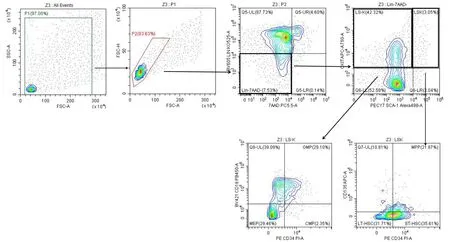
Figure 1.Flow cytometry analysis of the hematopoietic stem and progenitor cells
Statistical analysis
Results were analyzed using Graph Pad Prism 7.0software. All data were expressed as mean ± SEM and differences between groups were examined by the analysis of variance. A probability value of P < 0.05 was considered significant.
Results
XBJ promoted differentiation function of mice BM cells in vitro
To directly evaluate the differentiation function of XBJ on mouse BM,we first performed morphology analysis using inverted optical microscope after 10 days culturein vitro.In XBJ group,we observed an increased number of mature immune cells,dendritic cells in particular,which is the most powerful antigen presenting cells(APCs)in the organism(Figure 2A).This result suggested that XBJ promoted myeloid differentiation of BM cellsin vitro.
Next,to explore the mechanism,cells were collected and a series of transcription factors were evaluated by qPCR.We found that mRNA expression of CD11B(expressed in neutrophilsor monocytescells)was significantly increased while the expression of GFI1B,GATA2 and FOS (expressed in HSPCs) were significantly decreased in XBJ groups(Figure 2B).Therefore,the effects of XBJ on BM may be related to the mRNA expression of the transcription factors.
LPS altered HSCs homeostasis in mice.
In this study,LPS was injected into mice to mimic the conditions of sepsis,which is an established murine model.We firstdeter mined the HSC sho meostasis affected by LPS in mice.BM cells were isolated and analyzed by flow cytometry based on the immunophenotypic surface markers of BM cells.Our results suggests that the percentage of BM Lin-SCA-1+c-KIT+(LSK)cells,a subset enriched in HSPCs,were significantly increased in LPS group(Figure 3A).
We further analyzed the distinct subsets of LSK pool which include LT-HSC,ST-HSC and MPPs,and the more mature pool of CMP,MEP and GMP which give rise to the myeloid progeny.The mice in LPS group showed a robust expansion of LT-HSC and a noticeable decrease in MPPs,MEP and GMP(Figure 3B,Table 2).The results indicated that the HSCs homeostasis was altered in sepsis mouse model which may due to a defect in regeneration into myeloid progenitor cells.
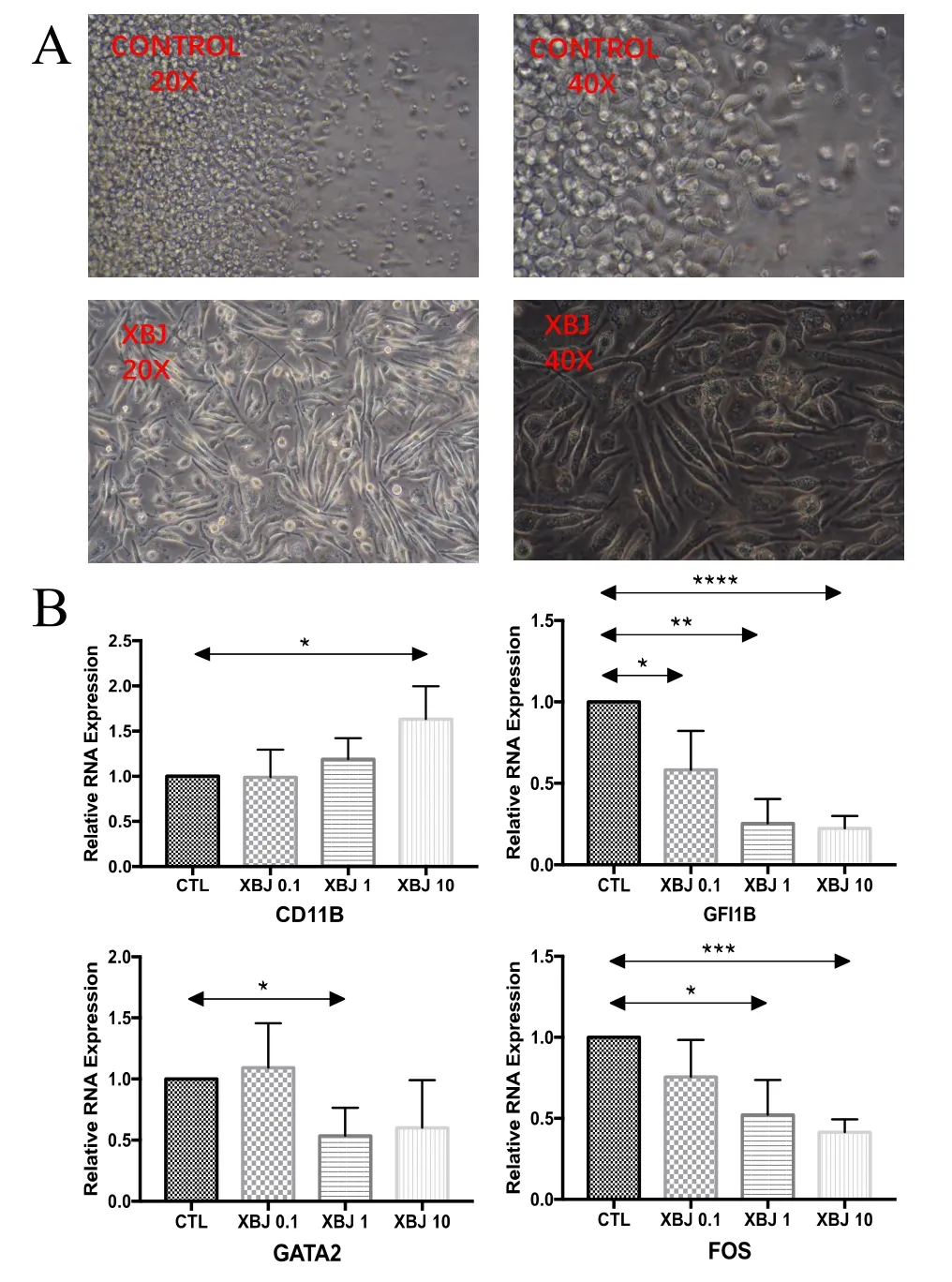
Figure 2.XBJ promoted differentiation function of mouse bone marrow cells in vitro.

Table 2.LPS altered hematopoietic stem cells homeostasis in mice(Lin-%)
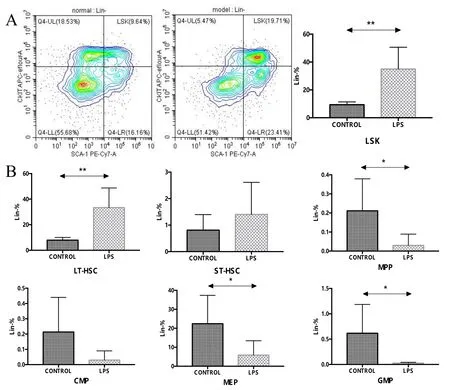
Figure 3.LPS altered hematopoietic stem cells homeostasis in mice
XBJ regulated LPS-induced LSK expansion in mic e and alleviated immunosuppression
Based on the results above,we explored the effects of XBJ on hematopoietic homeostasis in sepsis mice.We first quantified the frequency of LSK in mice by flow cytometry.The result shows that the frequency of LSK cells in the LPS group was significantly expanded compared with control group(P=0.0037,Figure 4A and B).In contrast,the frequency of LSK cells significantly decreased in the XBJ group compared with LPS group(P=0.0001,Figure 4A and B).Simultaneously,the same results were observed in LT-HSC(P=0.0025,P=0.0060,Figure 4C).Together,these data suggested that XBJ treatment might exert a suppressive effect on LSK expansionin vivo.
To explore whether XBJ can improve immune function by improving hematopoietic homeostasis in sepsis mice,the proportion of MDSC swas measured by flow cytometry according to the immunophenotypic surface markers CD11b+GR-1+.We found that the population of MDSCs in the LPS group was significantly increased compared with control group(P=0.0003,Figure 4D),whereas the population of MDSCs in XBJ group was significantly decreased compared with the LPS group(P=0.0136,Figure 4D).The result indicated that the mechanism of XBJ improving the immune function in sepsismice may be related to the regulation of hematopoietic homeostasis.
Effect of XBJ on gene expression of transcription factors
Because transcription factors is essential for lineage-restricted differentiation,we studied the molecular mechanism underlying the suppression of XBJ in HSCs by measuring gene expression ofthe transcription factors.We selected 6 transcription factors:RUNX1,GATA2 and LSD1 which required for production or self-renewal of LT-HSC,and GFI1B,PU.1 and FOS which is critical for myeloid differentiation.The results suggests that,except PU.1,the relative expression of the mRNAs of the other 5 genes in LPS group were all significantly down-regulated compared with control group(Figure 5A to F,Table 3).The mRNA expression of LSD1 and PU.1 in XBJ group showed significantly higherlevel than LPS group and controlgroup respectively(Figure 5E and F,Table 3).This suggests that the mechanism of XBJmay be related to the up-regulation of histone demethylase LSD1 gene and myeloid transcription factor PU.1 gene.
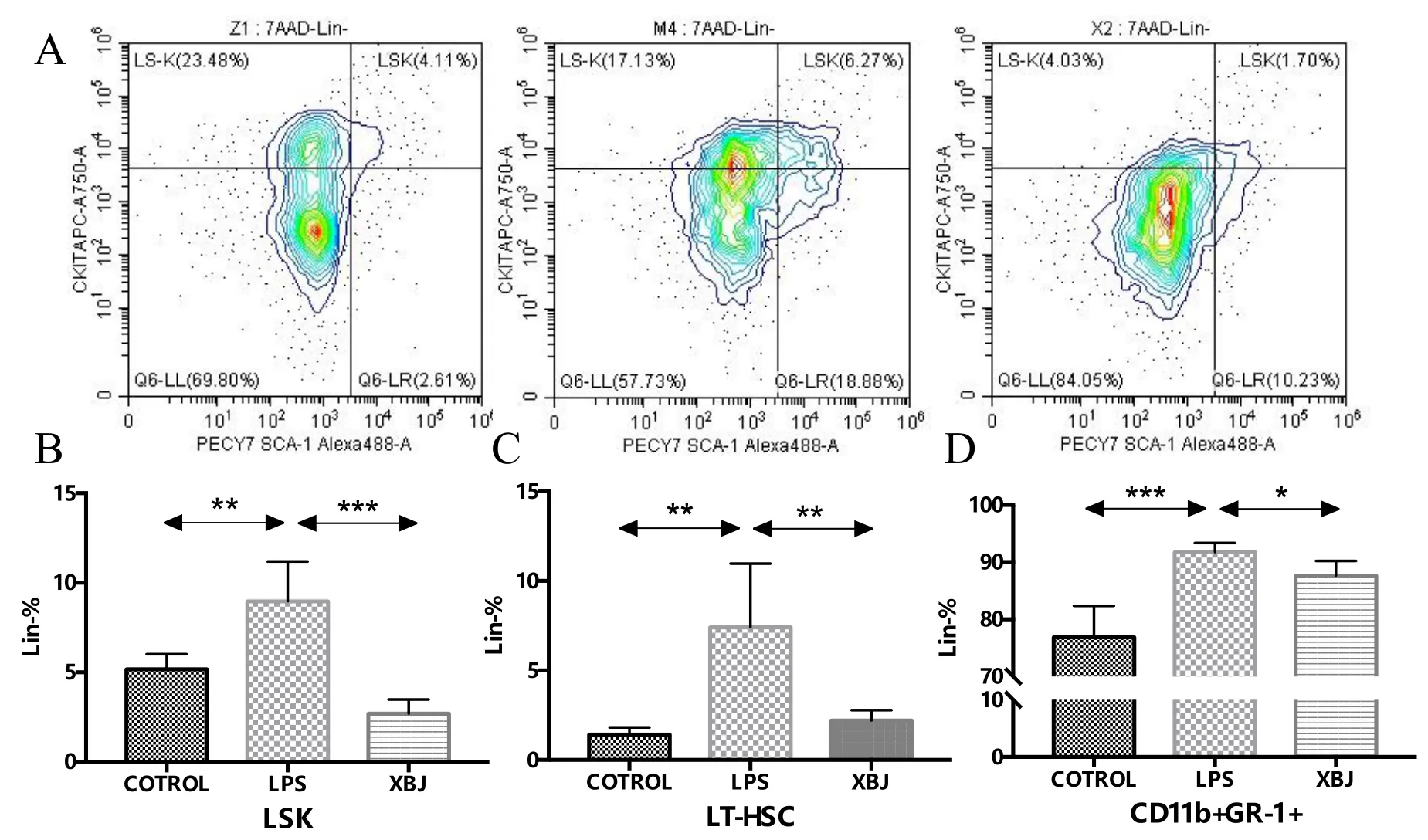
Figure 4.XBJ regulated LPS-induced LSK Expansion and alleviated immunosuppression
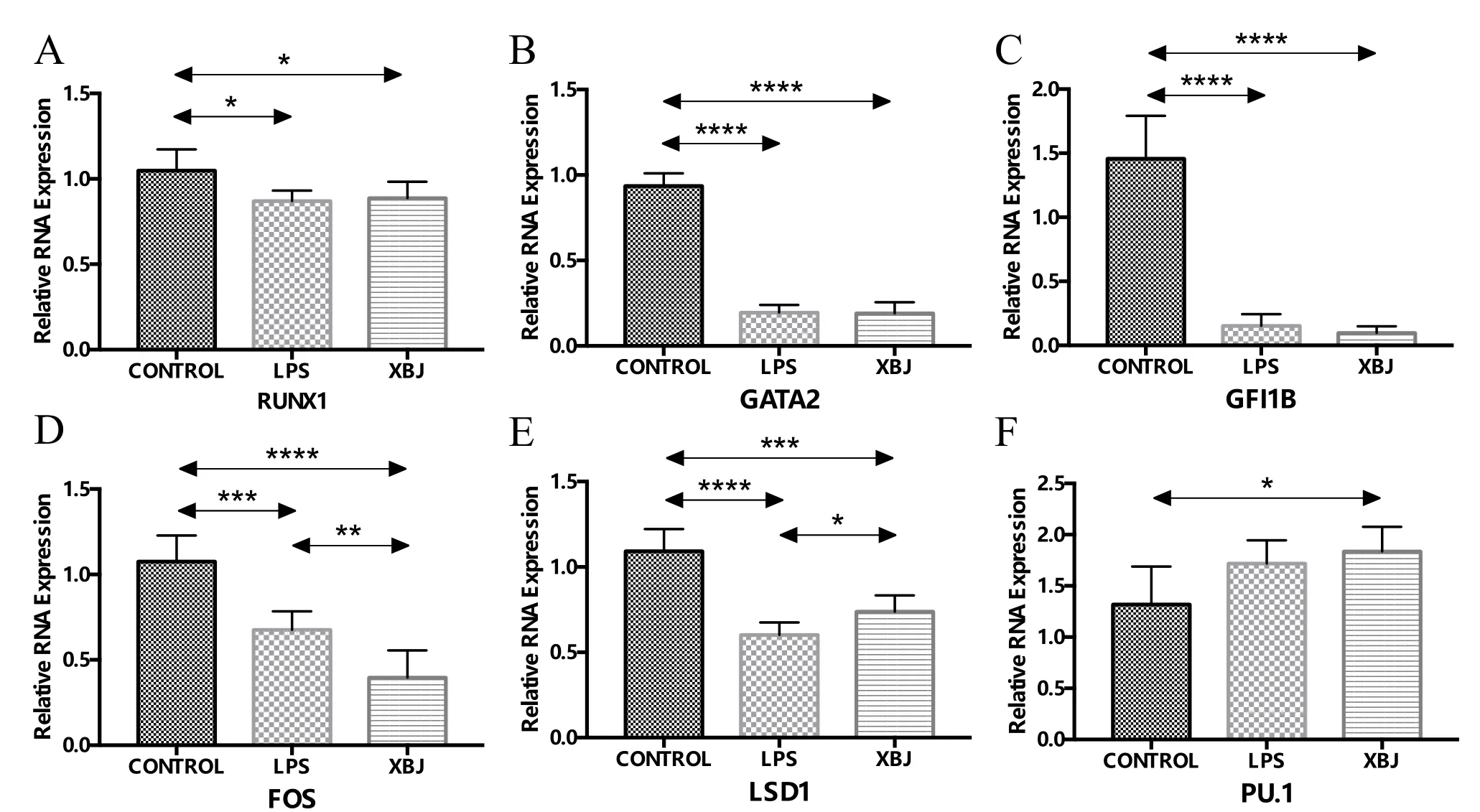
Figure 5.Effect of XBJ on gene expression of transcription factors

Table 3.Effect of XBJ on gene expression of transcription factors
Discussion
Sepsis is a severe infection associated with organ dysfunction.Even though significant efforts have been made,no effective specific anti-sepsis treatments exist so far[20].Hence,novel ideas and approaches are sorely needed to address this significant health problem[7].The severe infection underlying sepsis attributed to hyperactivation followed by exhaustion ofmature hematopoietic cells such as neutrophils or macrophages,a key cell type of the innate immune system[8,21].Due to their short life span,neutrophils need to be continuously generated in steady-state conditions from HSPCs in the BM to ensure their immediate availability for the containment of invading pathogens[22].Therefore,the contribution of the HSC to hematopoietic homeostasis during infection is a new area of investigation[23].
HSCs,as a foundation for the immune response,can be subdivided into LT-HSC and ST-HSC.HSCs give rise to multiple types of hematopoietic progenitor cells(HPC),which including MPP,CMP,GMP and MEP.Finally,billions of mature blood cells is produced,which do not self-renew thus need to be regenerated from the pools of upstream HSCs and HPCs[24].All blood lineages participate in the initiation and resolution of inflammatory events.HSCs are normally maintain a quiescentstateduring homeostasis,butwith acute infection,they rapidly exit the quiescent state and transiently proliferate HPCs and increase the output of immune cells[25].
Recentstudies suggestthatsepsis causesHSC dysregulation,promotes acute expansion of LSK and lead to a block of HSPC differentiation[6-8].Our result showed that the percentage of BM LSK cells were significantly increased in LPS induced mice,which consistent with previous researches[6-8].The results indicated that LPS altered hematopoietic stem cells homeostasis in mice.We also found that XBJ,a formula functioned to promote blood circulation and detoxification (活血化瘀), promoted myeloid differentiation of BM cellsin vitroandin vivo.
Because transcription factors are intrinsic determinants of cellular phenotype,it is an entry point to study the molecular mechanism underlying the suppression of XBJ in HSCs.RUNX1 and GATA2 has long been implicated as a hematopoietic transcription factor for repopulating LT-HSCs in mouse and adult bone marrow[26,27].Our results suggest that LPS down-regulated these genes expression,but XBJ has not changed this trend.LSD1 is a histone demethylase that activates and represses many transcriptional programs,and is a crucial role in early embryonic development[28,29].In our current research,LSD1 was significantly decreased in sepsis mouse,but XBJ increased it.GFI1B,PU.1 and FOS is critical for myeloid differentiation[30,31].The mRNA expression of PU.1 in XBJ group showed significantly higher level.Therefor,XBJ suppresses the expansion of LSK cells in septic mice maybe through up-regulating LSD1 and PU.1 genes.
Conclusion
In conclusion,hematopoietic stem cells homeostasis was altered in sepsis mice.Xuebijing injection can improve immune function in sepsis mice by regulating hematopoietic homeostasis.Its mechanism may be related to the up-regulation of LSD1 and PU.1 gene expressions.We explored the potential mechanism of Xuebijing in the treatment of sepsis from the perspective of bone marrow HSCs.It provides new basic experimental evidence for the anti-sepsis effect of XBJ.
 TMR Modern Herbal Medicine2019年4期
TMR Modern Herbal Medicine2019年4期
- TMR Modern Herbal Medicine的其它文章
- Network pharmacology based method for mechanistic investigation of the Compound Xintahua in the treatment of atherosclerosis
- Bio-characteristic profiling related to clinic:A new technology platform for quality evaluation of Chinese materia medica
- Identification of prognostic markers by integrating the genome and transcri ptomics in ovarian cancer
- Similarity measurement of Chinese medicine ingredients for cold-hot nature identificatio n
- Compatible stability study of XingNaoJing injection based on physical-chemical properties analysis
